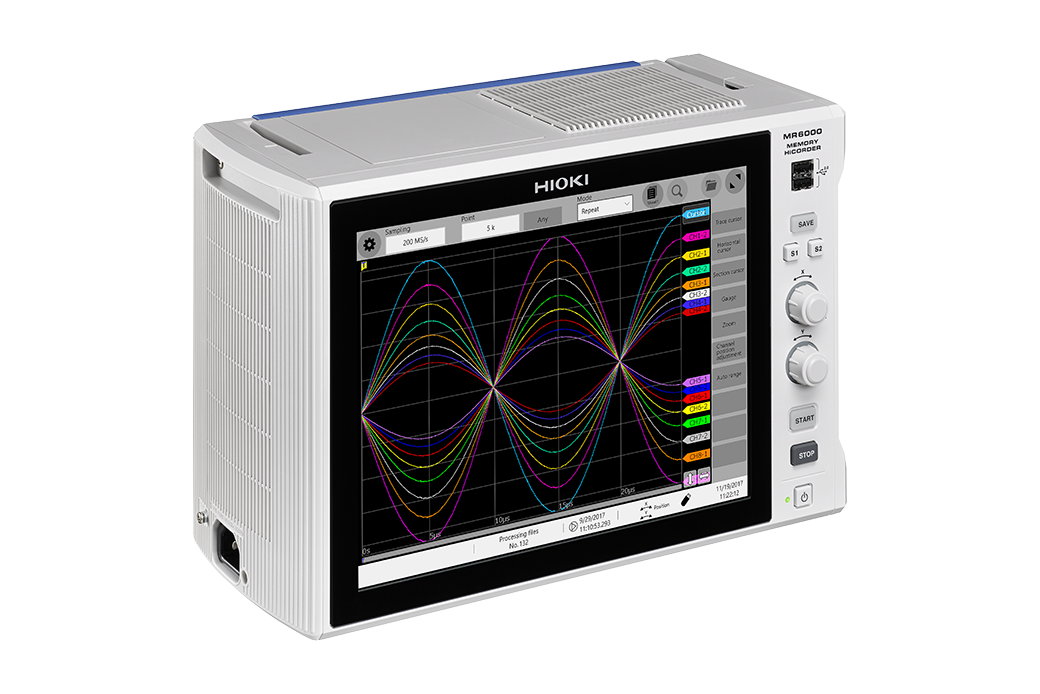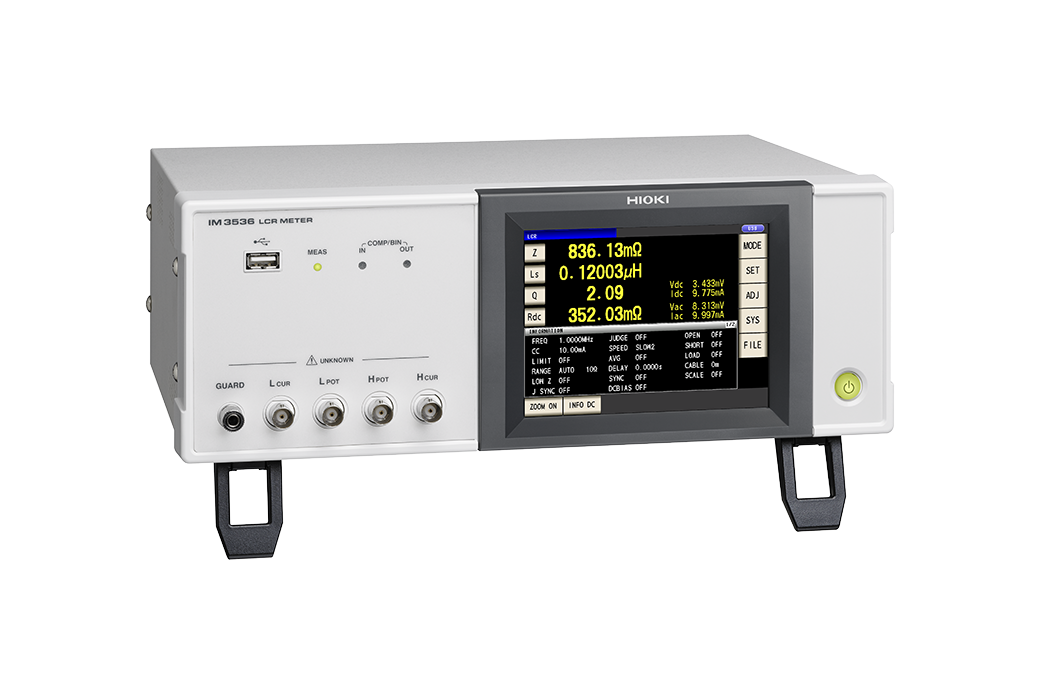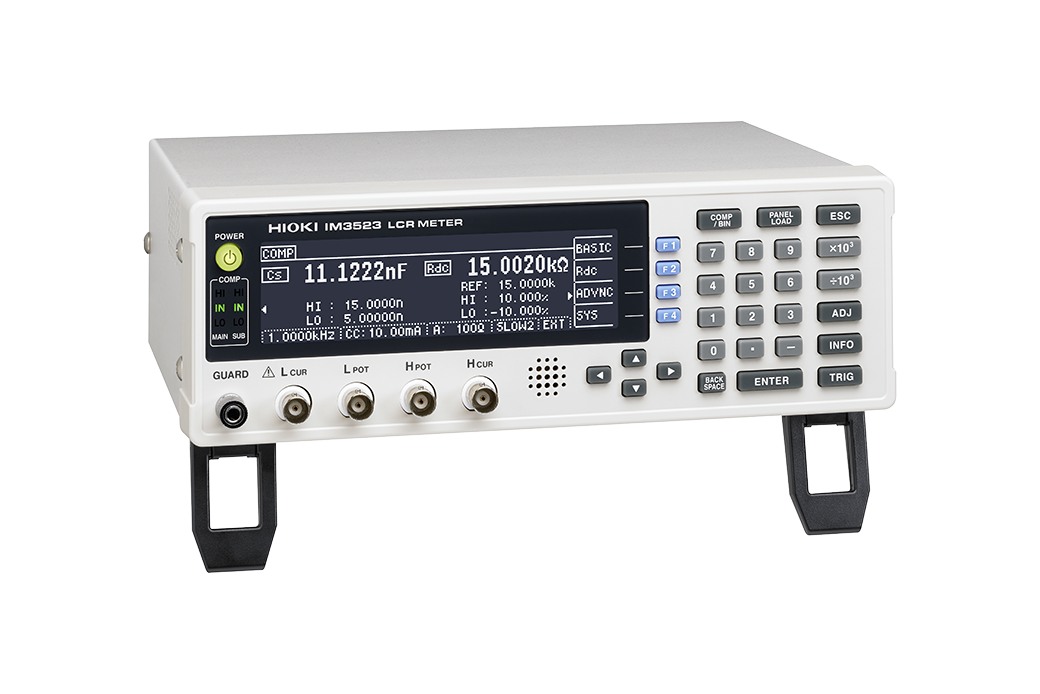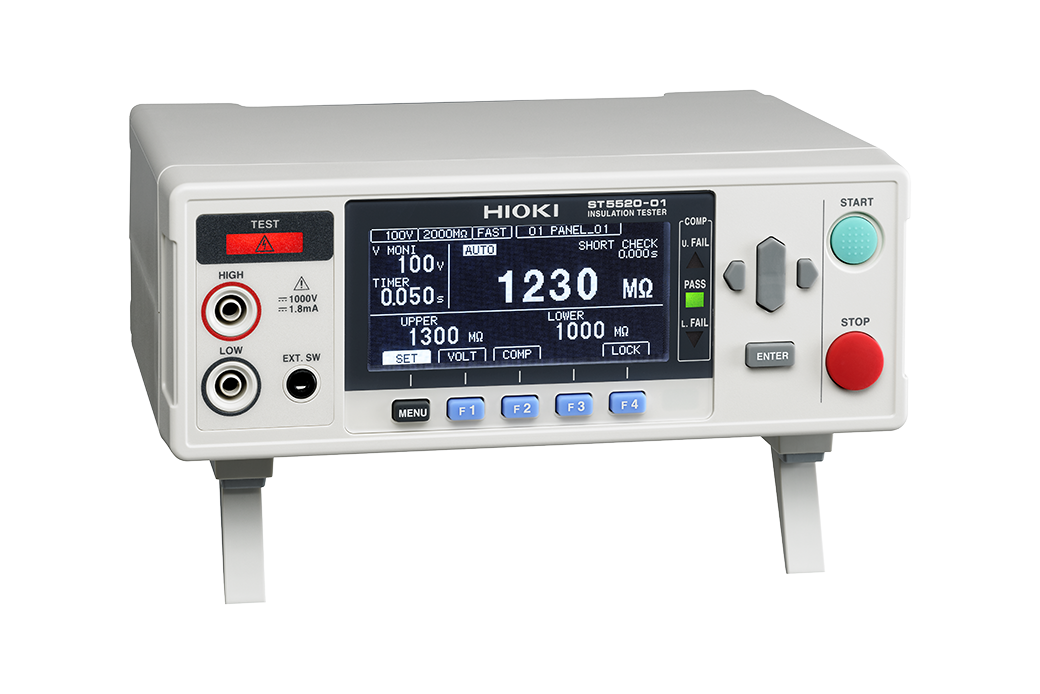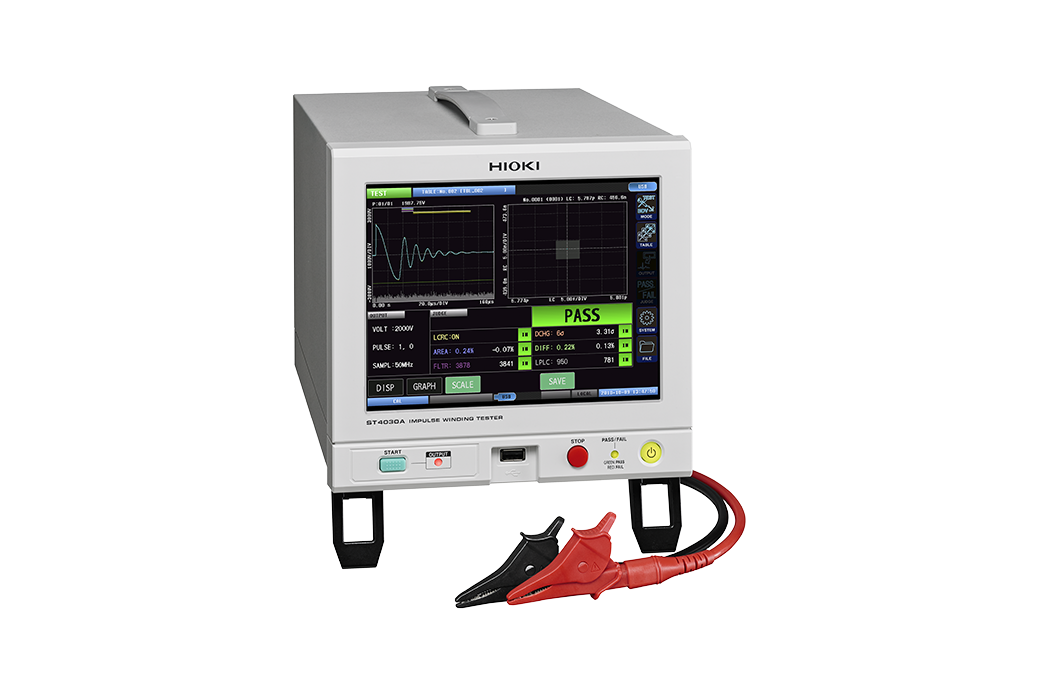Electric Motor Testing
Introduction of Electric Motors and Reasons Why Electric Motor Testing is Necessary
Overview
Electric motors are used in a variety of fields, including home appliances, industrial machinery, and electric vehicles (EVs), making them an essential part of our daily lives. These power devices utilize the interaction of a magnetic field and current to output rotary motion. Specialized measuring instruments are necessary in order to test electric motors, for example in design, development, and production processes.
This article introduces principal methods for testing electric motors and explains why testing is necessary.
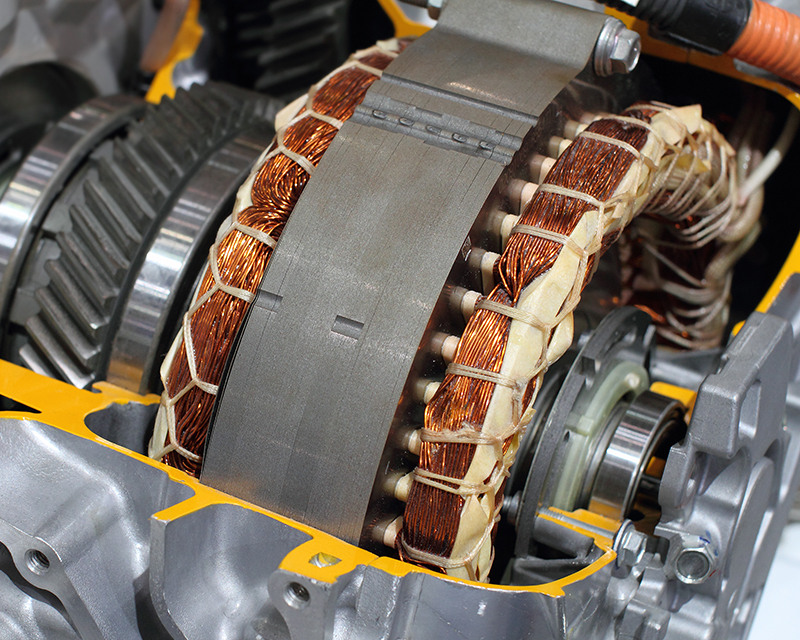
What is an Electric Motor?
Electric motors, which utilize rotary motion, are used in a variety of applications, ranging from electrical products to electric vehicles (EVs) and industrial machinery. Electric motors can be categorized based on the type of power supply that drives them as either DC motors or AC motors. Moreover, electric motors yield an array of names (including DC motors, brushless DC motors, stepping motors, AC motors, synchronized motors, and inductive motors) based on their purpose of operating principles, power supply, structure, and characteristics.
Electric motors convert electrical energy into rotational force. Magnets are involved in the rotation of electric motors. When current flows through a coil wound around an iron core, it becomes a magnet. This type of magnet is known as an electromagnet, and it acts as a magnet only when current flows. Like conventional magnets, electromagnets have a North pole and a South pole, and electric motors utilize the forces that cause magnetic poles to attract and repel one another.
 Diagram of electromagnet principle
Diagram of electromagnet principle
Why is Electric Motor Testing Necessary?
As introduced above, electric motors play an extremely important role in a variety of electrical products, EVs, and industrial machinery. Furthermore, they are extremely precise devices that incorporate components such as wire, insulators, cores, and permanent magnets. So their performance, efficiency, and safety are affected by their design and characteristics. Consequently, careful testing must be carried out in order to verify the state of electric motors.
Electric Motor Testing Methods You Need to Know: Design and Development
Dynamic electric motor characteristics measurement
Memory HiCorders are used to record the invertor’s output voltage, output current, torque, and RPM from the start to the end of the electric motor’s operation. After measurement, the instrument’s high-speed waveform calculation functionality is used to calculate the motor’s power and efficiency as well as the inverter’s output power, and its X-Y display functionality is used to display those results.
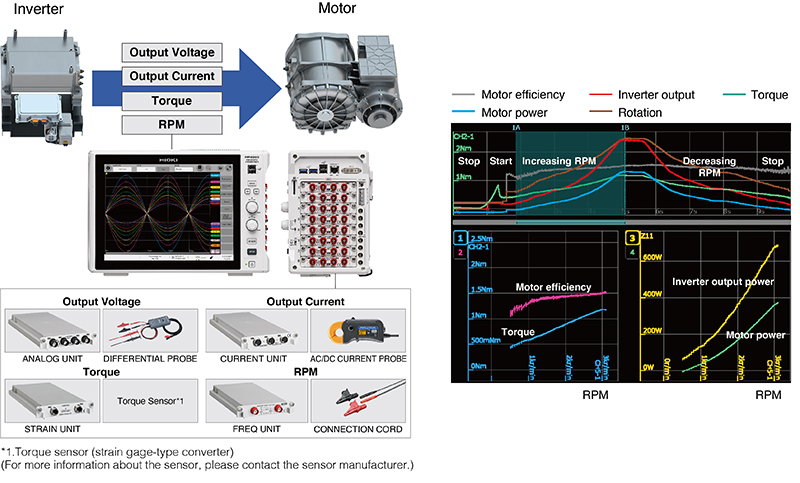 Example of use with Memory HiCorder MR6000 and related options
Example of use with Memory HiCorder MR6000 and related options
Motor torque vibration measurement
The electric motor’s torque and vibration are measured by a Memory HiCorder in order to analyze the motor’s behavior during operation. The instrument’s FFT calculation functionality is used to perform a frequency analysis in order to identify unanticipated frequency components, including resonance phenomena, which are caused by the motor and mechanism’s natural vibration frequency and by vibrations during operation.
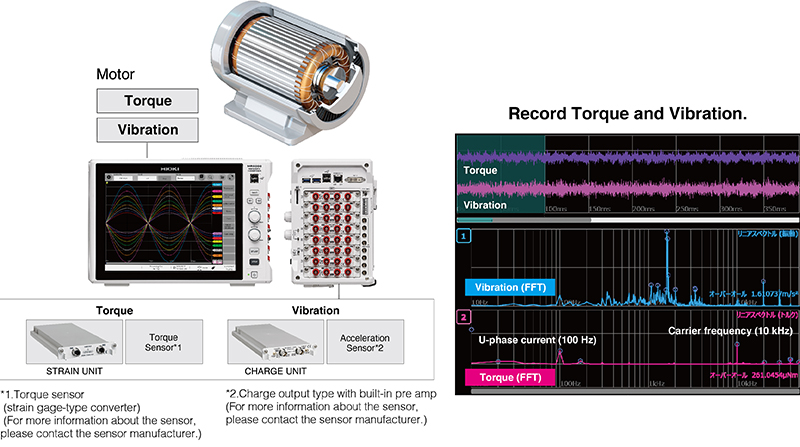 Example of use with Memory HiCorder MR6000 and related options
Example of use with Memory HiCorder MR6000 and related options
Resolver rotational angle measurement
Resolvers are used as sensors to accurately measure the angle position of electric motors. Motors are used under demanding conditions over extended periods of time in harsh environments, including in industrial machinery, servos, and EVs. The resolver’s excitation and output signals are measured by a Memory HiCorder, and the instrument’s waveform calculation functionality is used to calculate the resolver’s rotational angle. That angle and its relationship to other signals can be analyzed in order to adjust the motor control sequence.
As manufacturers seek to extend the range of EVs, they must improve the energy efficiency of motor control by making associated algorithms more precise.
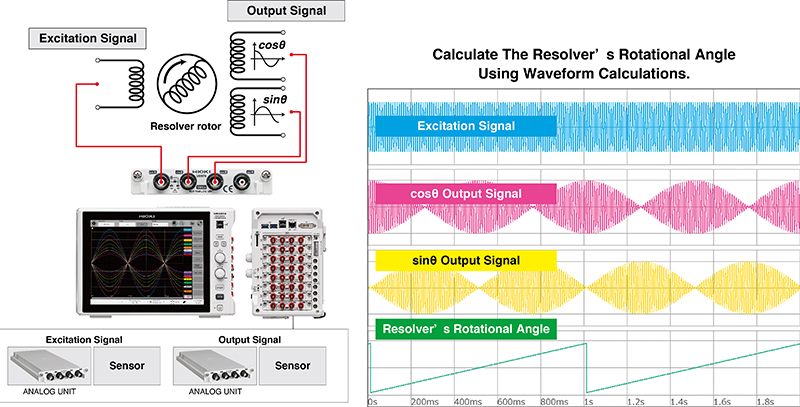 Example of use with Memory HiCorder MR6000 and related options
Example of use with Memory HiCorder MR6000 and related options
Electric Motor Testing Methods You Need to Know: Production Processes
Measurement of electric motors’ winding resistance
It’s possible to check for wiring breaks by measuring the resistance of motor windings. If these measurements are made using a high-precision resistance meter, manufacturers can also detect errors in wire thickness and the number of turns.
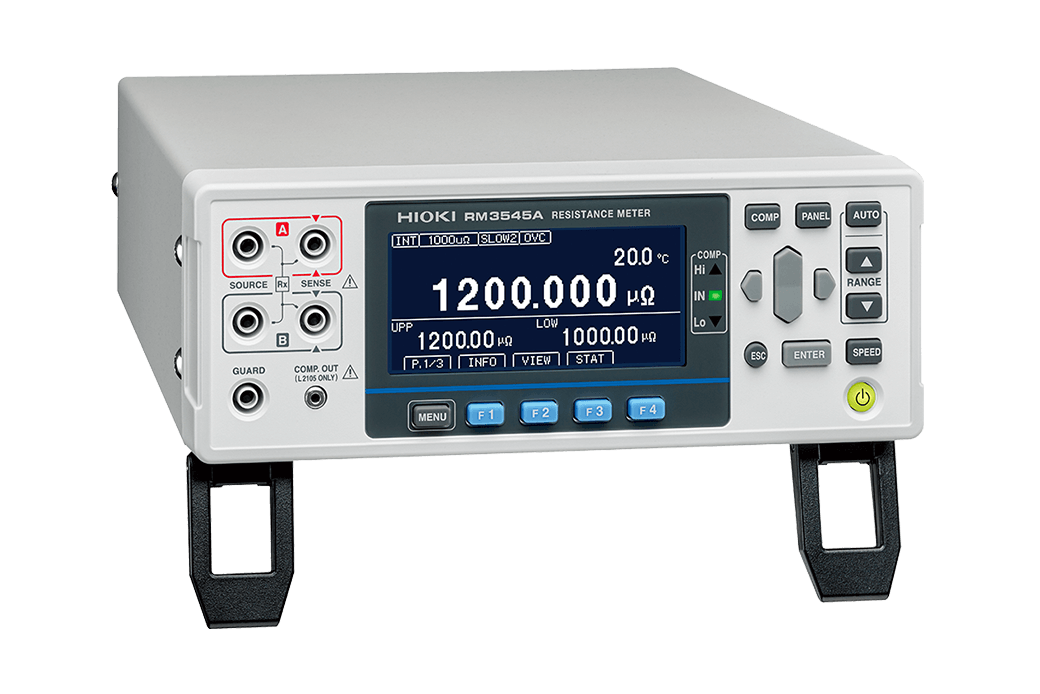 Resistance Meter RM3545A
Resistance Meter RM3545A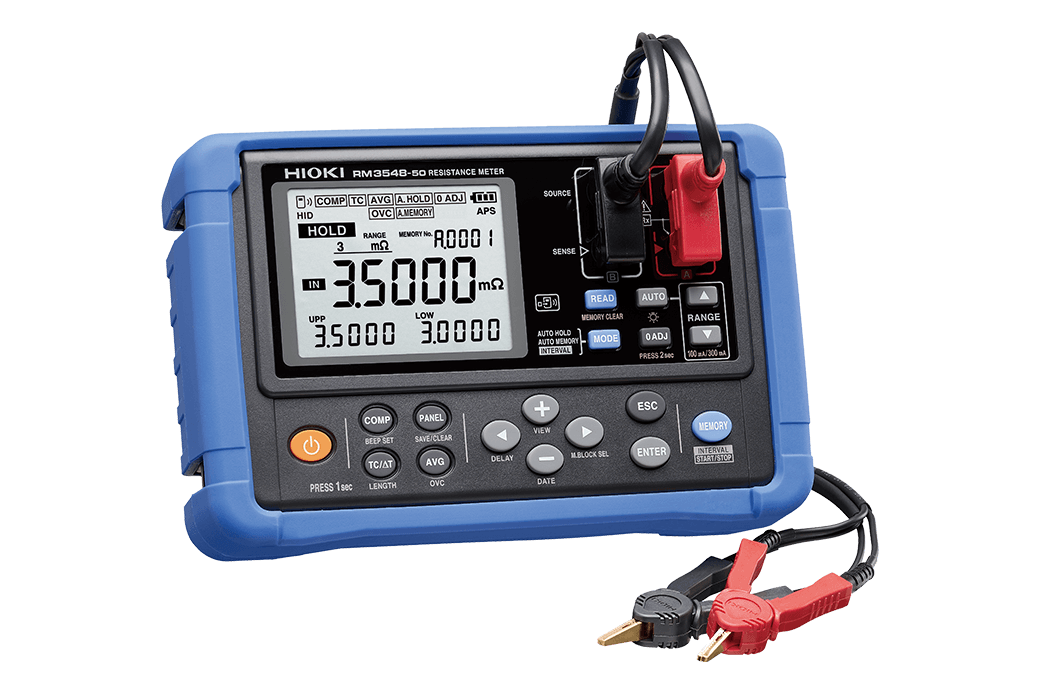 Resistance Meter RM3548-50
Resistance Meter RM3548-50
Measurement of motor coil inductance
In this test, winding inductance is measured. In this way, manufacturers can check phase balance, motor operating performance, unevenness in rotation, and consistency between the driver and electric motor.
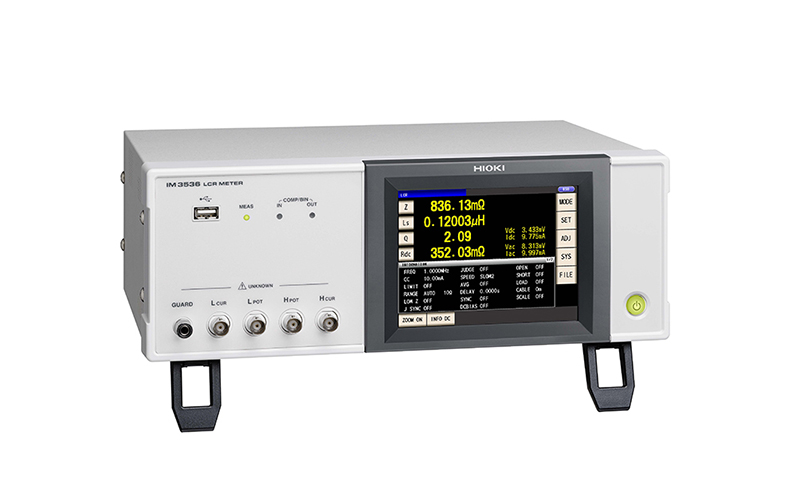 LCR Meter IM3536
LCR Meter IM3536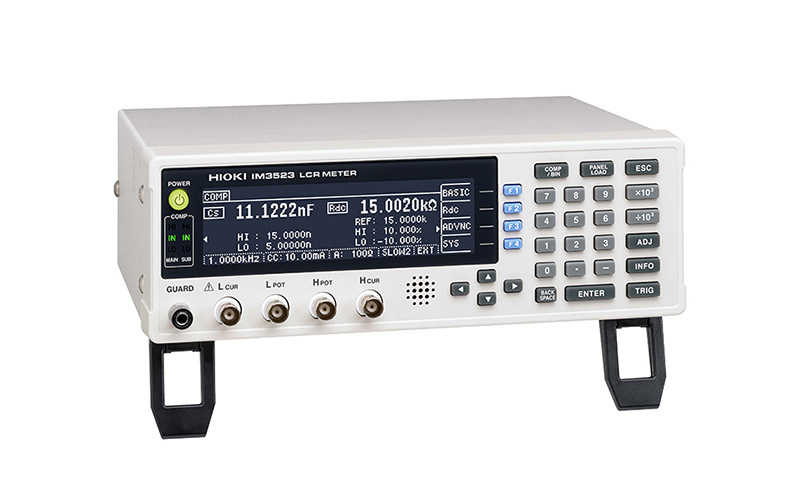 LCR Meter IM3523
LCR Meter IM3523
Insulation resistance measurement and withstand voltage testing of electric motor and winding
Manufacturers carry out insulation resistance testing and withstand voltage testing. By testing insulation during shipping inspections, a high level of safety can be ensured.
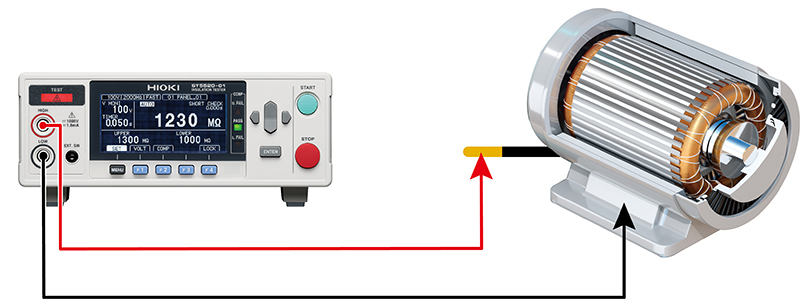 Insulation Tester ST5520
Insulation Tester ST5520
Observation of partial discharge during withstand voltage testing
Partial discharge events can be detected by observing the current and voltage waveforms during withstand voltage testing. Partial discharges can lead to an insulation breakdown. By checking for such discharges, manufacturers can detect latent defects in coils.
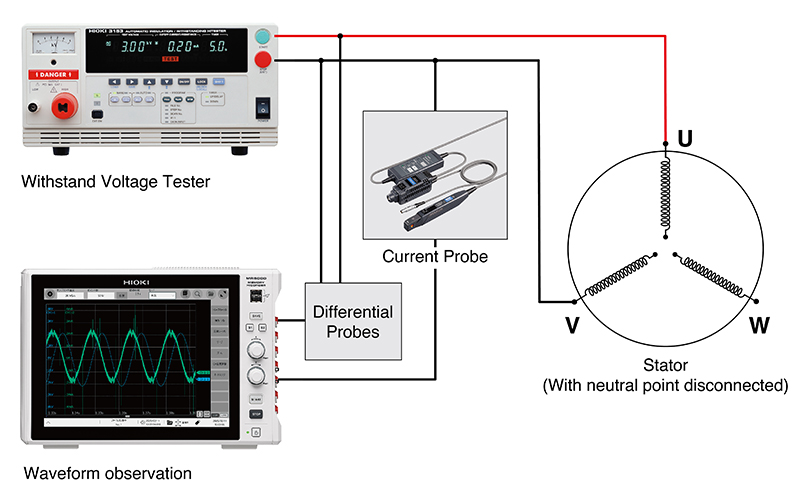 Configuration diagram
Configuration diagram
Testing for layer shorts in motor windings
This process helps manufacturers detect insulation failures (layer shorts) and degradation in motor windings. By quantifying response waveforms during such testing, it’s possible to detect defects at a higher level of precision than is possible with conventional techniques.
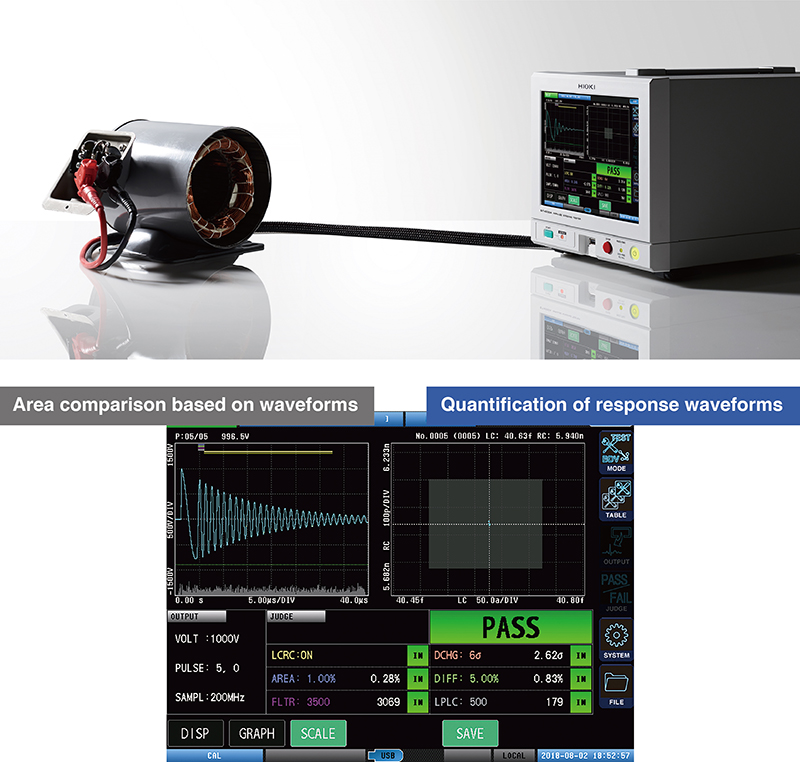 Impulse Winding Tester ST4030A
Impulse Winding Tester ST4030A
Conclusion
As power devices that utilize the interaction of magnetic fields and current to generate rotary motion, electric motors are used to power a variety of applications, ranging from household appliances to large, industrial-use machinery. Since the performance, efficiency, and safety of electric motors are affected by their design and characteristics, manufacturers increasingly subject them to extensive testing.
How about conducting tests by referring to the testing methods introduced in this article?

